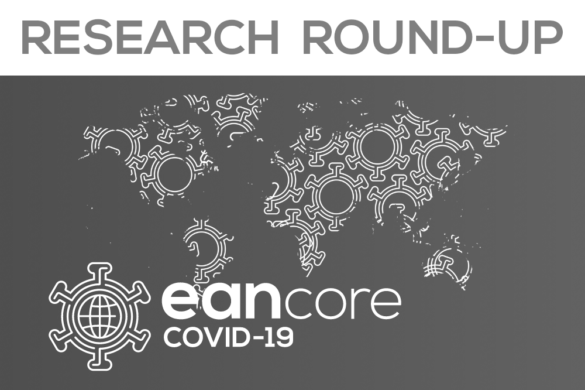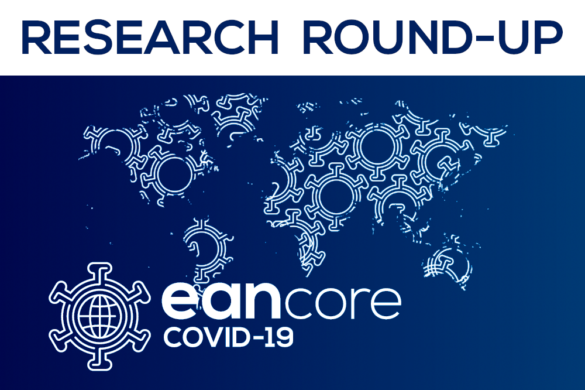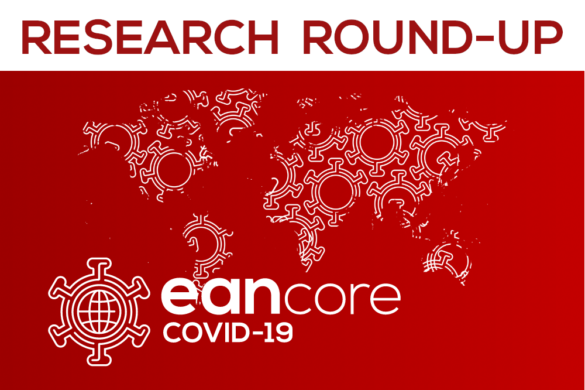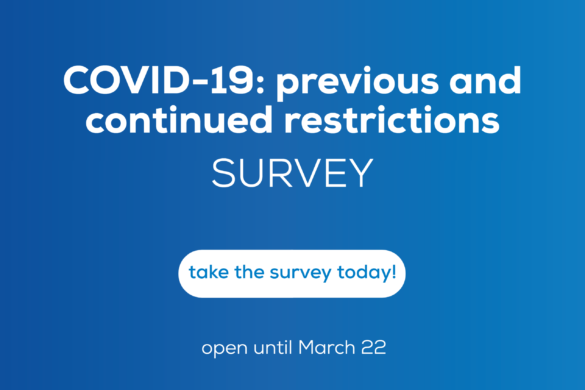Literature Review (Grey)
Read on for our highlighted selection of Covid-related Literature Reviews from the scientific press for January 2022
- The emergence, genomic diversity and global spread of SARS-CoV-2
- The relationship between COVID-19 and movement disorders: a narrative review
- Neurological Immune Related Adverse Events Post-COVID-19 Vaccination: A Systematic Review
- Prevalence and risk factors of musculoskeletal pain symptoms as long-term post-COVID sequelae in hospitalized COVID-19 survivors: a multicenter study
The emergence, genomic diversity and global spread of SARS-CoV-2
Since the first cases of COVID-19 were documented in Wuhan, China in 2019, the world has witnessed a devastating global pandemic, with more than 238 million cases, nearly 5 million fatalities and the daily number of people infected increasing rapidly. In this article the authors describe the currently available data on the emergence of the SARS-CoV-2 virus, the causative agent of COVID-19, outline the early viral spread in Wuhan and its transmission patterns in China and across the rest of the world, and highlight how genomic surveillance, together with other data such as those on human mobility, has helped to trace the spread and genetic variation of the virus and has also comprised a key element for the control of the pandemic. Particular attention was dedicated to characterizing and describing the international spread of the major variants of concern of SARS-CoV-2 that were first identified in late 2020 and demonstrate that virus evolution has entered a new phase. More broadly, the authors highlight the current limited understanding of coronavirus diversity in nature, the rapid spread of the virus and its variants in such an increasingly connected world, the reduced protection of vaccines, and the urgent need for coordinated global surveillance using genomic techniques. In summary, this article provides important information for the prevention and control of both the ongoing COVID-19 pandemic and any new diseases that will inevitably emerge in the human population in future generations. Li, J., Lai, S., Gao, G.F. et al. The emergence, genomic diversity and global spread of SARS-CoV-2. Nature 600, 408–418 (2021). https://doi.org/10.1038/s41586-021-04188-6.
The relationship between COVID-19 and movement disorders: a narrative review
In this paper the authors review the literature on movement disorders in the context of the COVID-19 pandemic. First, there are a variety of transient movement disorders which may manifest in the acute phase of COVID-19, most often myoclonus with more than 50 patients described in the literature. New-onset parkinsonism, chorea and tic-like behaviours have also been reported. Movement disorders as a side effect after COVID-19 vaccination are rare, occurring with a frequency of 0.00002 – 0.0002 depending on the product used, mostly manifesting with tremor. Current evidence for potential long-term manifestations, e.g. long COVID parkinsonism, is separately discussed. Second, the pandemic also had an impact on patients with pre-existing movement disorder syndromes with negative effects on clinical status and overall wellbeing, and reduced access to medication and healthcare. In many parts the pandemic led to re-organization of the medical system including the development of new digital solutions. The movement disorder-related evidence for this is reviewed and discussed.
Schneider SA, Hennig A, Martino D. The relationship between COVID-19 and movement disorders: a narrative review. Eur J Neurol. 2021 Dec 16. doi: 10.1111/ene.15217.
Neurological Immune Related Adverse Events Post-COVID-19 Vaccination: A Systematic Review
The COVID-19 pandemic has affected millions of individuals worldwide. The global scientific effort to design an effective vaccine against this virus has led to the development of several vaccine candidates. The expedited roll-out of these vaccines has created some public distrust regarding the safety of these new vaccines. This review compiles clinical data from reports of diagnosed immune-related neurological events that have occurred post-COVID-19 vaccine administration except for those secondary to hematological abnormalities. A systematic literature search was performed, using several databases, to identify reports of post-vaccination adverse neurological events. The search resulted in 18 studies that met the criteria. These studies included 78 patients who had received COVID-19 vaccines and experienced at least one neurological adverse effect. The most common neurological event was Facial nerve palsy (62.3% of all events). Other less frequently reported events included the reactivation of herpes zoster, Guillain-Barre Syndrome, other demyelinating diseases, and neuropathy. The underlying mechanism was hypothesized to be related to vaccine-induced type 1 interferon production leading to decreased tolerance of the myelin sheath antigens. Other hypotheses include vaccine-induced transient lymphopenia and immune dysregulation. Most of the reported events were time-limited and resolved spontaneously. Given the rarity of reported neurological events compared to the total number of vaccines administered, and the similarity in the incidence of events between COVID-19 vaccines and other more common vaccines, there is little evidence to support a causal relationship between COVID-19 vaccines and adverse neurological events.
Shafiq A, Salameh MA, Laswi I, Mohammed I, Mhaimeed O, Mhaimeed N, Mhaimeed N, Paul P, Mushannen M, Elshafeey A, Fares A, Holroyd S, Zakaria D. Neurological Immune Related Adverse Events Post-COVID-19 Vaccination: A Systematic Review. J Clin Pharmacol. 2021 Dec 18. doi: 10.1002/jcph.2017.
Prevalence and risk factors of musculoskeletal pain symptoms as long-term post-COVID sequelae in hospitalized COVID-19 survivors: a multicenter study
This study investigated the prevalence of long-term musculoskeletal post-COVID pain and their risk factors in a large cohort of COVID-19 survivors. A multicenter cohort study including patients hospitalised due to COVID-19 in five hospitals of Madrid (Spain) during the first wave of the pandemic was conducted. Hospitalisation and clinical data were collected from medical records. Patients were scheduled for a telephone interview after hospital discharge for collecting data about the musculoskeletal post-COVID pain. Anxiety/depressive levels and sleep quality were likewise assessed. From 2,000 patients recruited, a total of 1,969 (46.4% women, age: 61, SD: 16 years) were assessed on average at 8.4 (SD 1.5) months after discharge. At the time of the study, 887 (45% women) reported musculoskeletal post-COVID pain. According to the presence of previous pain symptoms, the prevalence of “de novo” (new-onset) musculoskeletal post-COVID pain was 74.9%, whereas 25.1% experienced an increase of previous symptoms (exacerbated COVID-related pain). Female gender (OR1.349, 95%CI 1.059-1.720), previous history of musculoskeletal pain (OR1.553, 95%CI 1.271-1.898), the presence of myalgia (OR1.546, 95%CI 1.155-2.070) and headache (1.866, 95%CI 1.349-2.580) as COVID-19 associated onset symptoms, and days at hospital (OR1.013, 95%CI 1.004-1.022) were risk factors associated musculoskeletal post-COVID pain. In conclusion, musculoskeletal post-COVID pain is present in 45.1% of COVID-19 survivors at eight months after hospital discharge with most patients developing “de novo” post-COVID pain. Female gender, history of musculoskeletal pain, presence of myalgias and headache as COVID-19 symptoms at the acute phase, and days at hospital were risk factors associated with musculoskeletal post-COVID pain.
Fernández-de-Las-Peñas C, de-la-Llave-Rincón AI, Ortega-Santiago R, Ambite-Quesada S, Gómez-Mayordomo V, Cuadrado ML, Arias-Navalón JA, Hernández-Barrera V, Martín-Guerrero JD, Pellicer-Valero OJ, Arendt-Nielsen L. Prevalence and risk factors of musculoskeletal pain symptoms as long-term post-COVID sequelae in hospitalized COVID-19 survivors: a multicenter study. Pain. 2021 Dec 10. doi: 10.1097/j.pain.0000000000002564.









